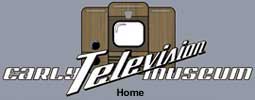Postwar Television History of Cable Television in SwitzerlandThe following is from Nicolin Salis:
I've looked around the website a bit more now and see that you're coming from cable TV. In this regard, I have some information about history in Switzerland that may interest you. In 1932, the State Post and Telephone Administration (PTT) began broadcasting the state's radio programm (there was one only per speech region) over the telephone line. As long as the telephone in the apartment was not being used for telephoning, the radio program was broadcast. The radio industry sold suitable active loudspeakers with transformer-balanced inputs and volume controls. When a telephone call came in, the radio was muted so that the telephone conversation could not be overheard through the loudspeaker. In the years that followed, six different radio programs were offered. The receiver had a Zenith rotary dial selector (like a telephone set) that allowed to select one of the six programs by pulse dialing. This was the so-called NF-TR (Niederfrequent-Telephonrundspruch = Baseband audio phone distribution). The fact that the private companies laid their own cables was very much appreciated at the time. It was a time of great unemployment, and the laying of cables under the ground and in the houses through the attic and to the apartments gave bread and work to many men. Customers of the PTT owned "Telephonrundspruch" were struggling with the fact that an interesting radio program was interrupted when a telephone call came in or that they could not use the telephone when the family patriarch wanted to listen to a program. For this reason, the PTT developed a carrier frequency system that modulated six radio programs in the long-wave range (150 kHz to 340 kHz) onto the telephone line. All radio sets in Switzerland at that time had this long wave range, so that the programs could be received by connecting the telephone line to the antenna sockets. This system was called HF-TR (high-frequency telephone broadcast = radio frequency audio distribution). The private network operators Rediffusion and Radibus (1946 merged into one company) adopted this technology by transmitting six programs on line pair 1. The customer therefore had the choice of whether he wanted to connect a passive loudspeaker with a wall mounted 3-channel program selector and volume control, or whether he could connect his long-wave radio antenna input to the Rediffusion-Network and thus listen to six programmes. In the 1970s, Rediffusion began to set up 300MHz coaxial networks based on the American model. They hired a Swiss émigré who had worked for Blonder-Tongue in America for years: Fred J. Schulz. He was my boss when I started working at Rediffusion in the late 70's. He was an excellent engineer and I owe him a lot. When the new coax networks were more or less completed (based mainly on Jerrold material, later also on components from Fuba or Bosch or many self-developed devices; we had our own development laboratory and our own production for it), the old cable networks with their 3 or 6-pair cables were taken out of service (approx. 1980). The Rediffusion company was then the top dog in the coax cable television sector for many years. In the end, it was sold several times and changed its name several times (Rediffusion, Cablecom, UPC, Sunrise). Today it is part of the Liberty Global group. It is still the largest cable network operator in Switzerland, but suffers greatly from the many other TV providers that now exist. I assume that the coax distribution will eventually be abandoned. The competitors work via fiber optics and of course have fewer problems transmitting large amounts of data. And young people don't watch TV at all anymore. As a collector, I still hold the cable network in high esteem because it a) allows you to connect any number of devices at the same time (I have 16 cable outlets each in my house and in my restoration workshop) b) still offers a large selection of FM radio programs (terrestrial broadcasting of FM is to be discontinued in this country next year). |
